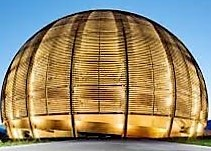Speaker
Description
The Barium (Ba) star phenomenon is unmissable from the study and understanding of nucleosynthetic processes occuring in asymptotic giant branch (AGB) stars. Ba stars belong to binary systems, where the former AGB polluted the companion, a less evolved star, which became enriched with material produced through the slow neutron capture process (s process). While the AGB has evolved to a white dwarf, the currently observed Ba star preserves the abundance pattern of the AGB, allowing us to test the imprints of the s process. Comparing different AGB nucleosynthetic models and Ba star abundances, we are able to constrain the effect of the initial rotation velocity or the neutron source in the interior of the AGB star. Additionally to the large, homogeneous observational sample of Ba stars of de Castro et al. (2016) an extended list of heavy element abundances was published by Roriz et al. (2021a,b), including Sr, Mo, Ru and re-determined La values. Here I will present the results for individual Ba stars using a simplified method of normalising the models to the determined [Ce/Fe] abundances and calculating dilution factors for each star and model. The results of the comparison of models with initial AGB masses from an independent source and the analysis of 28 Ba giant star abundances confirm that the polluting AGBs are of low mass (< 4 MSun). There is a good agreement between the models and the abundance pattern for most of the stars, with some peculiarities at the first s-process peak. Nb, Mo and Ru values higher than the model predictions indicate the operation of a different nucleosynthesis path, which needs further investigation.
